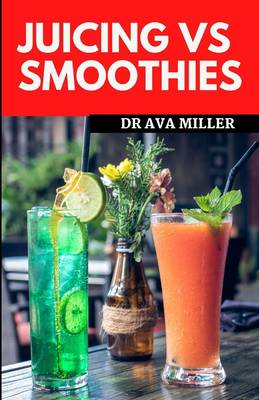
- Afhalen na 1 uur in een winkel met voorraad
- Gratis thuislevering in België vanaf € 30
- Ruim aanbod met 7 miljoen producten
- Afhalen na 1 uur in een winkel met voorraad
- Gratis thuislevering in België vanaf € 30
- Ruim aanbod met 7 miljoen producten
Zoeken
€ 13,95
+ 27 punten
Omschrijving
Smoothies provide more nutrients because the vitamin-packed, fibrous pulp and skin hasn't been removed. A smoothie for a snack or as an addition to a meal can provide a great number of beneficial nutrients, minerals and phytochemicals, especially if a variety of fruits and veggies are used. Adding fruits and veggies of different colors can help vary the nutrients your smoothie provides. Juices can sometimes be less calorie-dense than smoothies, so they can often be added to a regular diet as a snack or health aid. They do contain important nutrients, but not to the extent that the skin and other solid elements of a fruit or vegetable do. If you're juicing at home, try to use a mostly vegetable base, rather than fruits. The difference between juicing and blending is what's left out of the process. With juicing, you're essentially removing all fibrous materials, leaving only the liquid of the fruits and vegetables. With blending, you get it all - the pulp and fiber that bulks up the produce. This is where we begin to separate the benefits of the two options. Ready to discover more? Grab a copy of this book now.
Specificaties
Betrokkenen
- Auteur(s):
- Uitgeverij:
Inhoud
- Aantal bladzijden:
- 120
- Taal:
- Engels
Eigenschappen
- Productcode (EAN):
- 9798846845954
- Verschijningsdatum:
- 18/08/2022
- Uitvoering:
- Paperback
- Formaat:
- Trade paperback (VS)
- Afmetingen:
- 140 mm x 216 mm
- Gewicht:
- 149 g

Alleen bij Standaard Boekhandel
+ 27 punten op je klantenkaart van Standaard Boekhandel
Beoordelingen
We publiceren alleen reviews die voldoen aan de voorwaarden voor reviews. Bekijk onze voorwaarden voor reviews.











